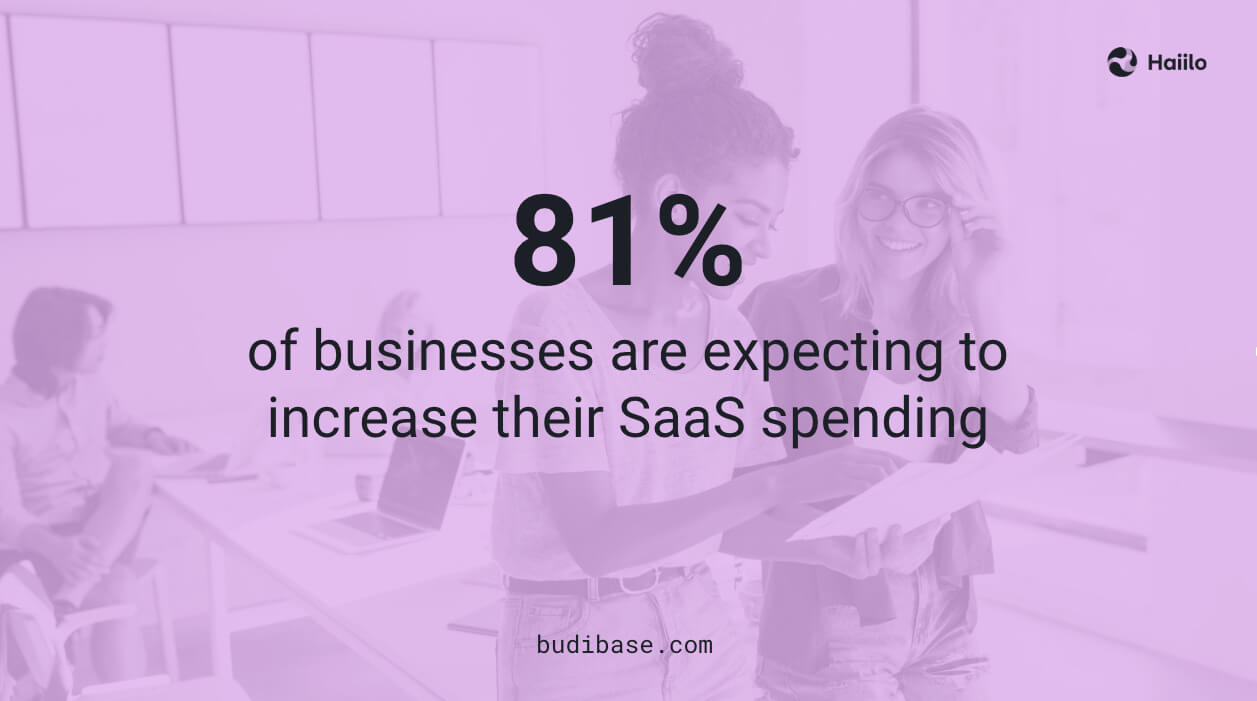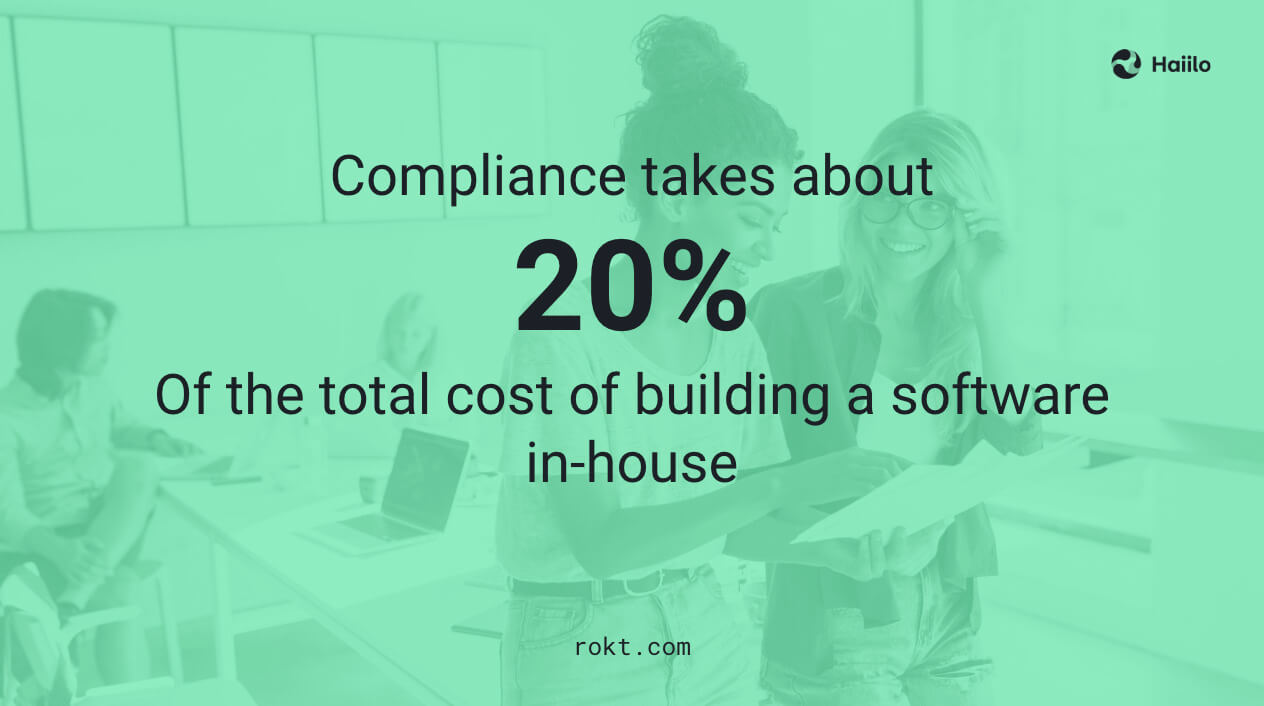Building an intranet is a challenging task. Yet, intranet platforms should be a part of every organization’s tech stack. When building an intranet in your organization, many factors must be considered.
If you are in the process of implementing an intranet in your company, this blog is for you!
Here, you will find useful information about whether you should build an intranet in-house or buy a ready-made solution built by experts in this field. We will also discuss some of the important things to consider when deciding whether to take the buy or build route.
Building an Intranet: What Does It Really Mean?
Building an intranet can mean two things: building a solution from scratch or implementing an out-of-the-box solution built by a third-party company.
These two are quite different, and they require different amounts of expertise, resources, time, and other investments.
Historically, many enterprise organizations have chosen to build their homegrown intranet solutions. The main reason for that was the belief that out-of-the-box intranets cannot meet specific enterprise needs.
Today, however, this is not the case anymore. The intranet and communication software market has grown exponentially in the decade, and many companies offer solutions that can satisfy every type of organization’s needs, even those of the most complex enterprises.

So is it worth building an intranet in-house, or should you take the simpler route? Keep reading to discover why buying an intranet is better than building it.
💡 Also, learn about what is an employee experience platform and how to choose one.
Experience seamless intranet implementation with Haiilo!
Buy vs. Build an Intranet: 10 Things to Consider
If you are in a dilemma about building an intranet versus buying an existing solution? There are multiple reasons why most organizations today choose to buy.
Here are the most important reasons.
1. Expertise and technical resources
The people who work for companies that sell intranet platforms have knowledge and expertise specialized in this field. They speak with their users daily and understand the features and functionalities that bring the best user experience, good user adoption, and, ultimately, the highest return on investment.
Technical teams are well equipped with the knowledge and the latest technology to build intranet solutions that best fit organizations’ internal communications needs.
Realistically, it would take years for your own company to gain such knowledge and expertise and learn the best practices for building an intranet from scratch.
💡 Related: How to build engaging intranet content!
2. Cost and high risk of failure
The cost of building a homegrown intranet is extremely high, and the biggest two expenses are people and technology. If you decide to build an intranet in-house, you must count on extensive involvement from your IT department. Moreover, you will probably have to hire an additional team of developers and other experts to make this happen.
These are the primary reasons why most companies today decide to buy a software solution instead of building it. Moreover, 81% of businesses are expecting to increase their SaaS spending.

At first, it may seem that buying an OOTB solution is a more cost-friendly solution, but this is not the case. Especially if you take into consideration that building an intranet has, in the end, resulted in a complete failure and a waste of money for many.
💡 Related: 11 Best Intranet Software Platforms in 2024
3. Time to realize value and speed of implementation
Intranet software companies take years to build intranets. Moreover, they have a continuous roadmap for improving existing and building new features and functionalities.
Often with software development, the need is immediate, so minimizing time to market is crucial. Purchasing solutions can reduce time to market by 90% and minimize the risk of unforeseen delays.
If your organization has identified a need for an intranet platform to improve workplace communication or team collaboration, you probably can’t afford to spend months or years to get the most out of your intranet.
It is important to understand that some OOTB solutions also take months to be implemented.
So when choosing an intranet to buy, make sure that you pick a provider that can ensure a fast and seamless implementation process.
4. Built-in integrations
Intranets without proper integrations with your existing workplace tech stack are likely to become a productivity killer instead of a productivity booster for your employees. Because intranets should serve as a digital home for your workplace, they should be integrated with the different solutions your employees use on a daily basis.
The good news is that intranets available on the market mostly have built-in integrations or open APIs that make integrations easy and fast. If you, however, decide to build an intranet in-house, it will take a lot of time and resources to build and maintain all the necessary integrations with various communication channels, project management tools, document-sharing solutions, and others.
5. Security
Intranet software vendors usually have designated teams and experts who focus on making their solutions secure for organizations, and enterprise-grade security is one of the main prerequisites for most intranet buyers.
So if you decide to build an intranet on your own, you need to take security into consideration. For example, making a GDPR-compliant intranet takes a lot of time and resources. According to research, compliance takes about 20% of the total cost of building an in-house software solution.

Existing vendors are required to provide a certain level of security to be on the market. So when choosing a vendor, make sure that they can guarantee GDPR compliance, and ideally are ISO 27001 certified.
Having that piece of mind that all of your employees’ data is secure is priceless!
6. Maintenance
High maintenance cost is one of the biggest reasons why companies decide to buy versus build an intranet. Since a vendor-supplied intranet is supported by experts with extensive knowledge and experience in the field, their ultimate goal is usually to provide their users with access to the latest features and functionalities.
So buying an intranet is best for organizations that want to simplify the implementation and maintenance software process and ensure a smooth and reliable digital workplace experience.
7. Scalability
When building an intranet, you need to take into consideration that your company will eventually grow. So how do you build a solution that can scale as your company grows?
Luckily, many of the ready-made solutions available on the market are built using infrastructure and architecture that can support the scalability your company needs.
8. Support and professional services
Even if you decide to build an intranet on your own, it’s important to understand that your job doesn’t end with the implementation. Customer support is a key aspect of the scenario and should never be overlooked.
Most companies that sell intranet platforms offer extensive customer support and customer success services along with the purchase. This means your employees are only a phone call or email away from solving any issues with intranet usage. When you build your own intranet, this luxury goes out the window.
Furthermore, some vendors offer professional services, which can be extremely valuable for large organizations with a more complex organizational structure or for organizations that need help with implementation or user adoption.
9. Mobile apps
Today’s workplaces are highly digital and mobile. So if you decide to build an intranet, you also need to make sure that you build a mobile app as well. Otherwise, your intranet user adoption will likely be low.
The good news is that most of the existing intranet vendors offer mobile apps as an out-of-the-box feature.
💡 Related: How to Choose the Best Intranet Software for a Large Company
10. Artificial intelligence
Whether you are buying or building an intranet, you should think about the latest market trends and technology advancements.
The most advanced intranet platforms in the market leverage artificial intelligence to make internal communicators more productive and enable them to create more engaging internal content. With the use of specific and well-optimized AI prompts, IC departments can really benefit from AI-powered intranet features.
AI-powered intranet platforms can also analyze big volumes of employee data, predict low employee engagement, and prevent employee turnover.
Furthermore, advanced solutions use generative AI to optimize and streamline information search in organizations, making employees much more productive and efficient.
11. Additional features and functionalities
Sometimes, intranet platforms available on the market offer additional built-in features to improve employee experience in the workplace. For example, Haillo social intranet comes with built-in surveys to measure employee engagement and monitor experience in the workplace.
Additionally, it offers a powerful employee advocacy module to enable companies to leverage employee ambassadorship to boost their sales, marketing, and HR performance.
💡 Also, learn about what is an employee engagement app and why every company news one.
Ready to Buy (or Build) an Intranet in Your Organization?
Regardless of whether you are buying or building your own intranet, these are the things to consider:
- Two-way communication
- Intuitive interface
- Easy roll-out
- Integrations
- White labeling needs
- Mobile apps
- Security and Compliance
- User management and role-based permissions
- Other features and functionalities.
To learn more about how to make sure you choose or build the best intranet solution for your organization, check out our intranet buyers guide!










